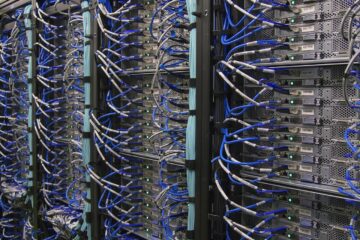PHP has long been one of the most widely used server-side scripting languages for web development. Over the years, it has gone through significant changes, particularly between versions 5, 7, and 8. These updates not only improved performance but also added powerful new features that changed how developers write and maintain PHP code. Understanding the main differences between these versions is crucial for maintaining secure, modern, and efficient applications.
PHP 5: The Old Workhorse
Released in 2004, PHP 5 was a major milestone in the language’s evolution. It introduced improved support for object-oriented programming (OOP), which made PHP more appealing for larger, more complex projects. Key features of PHP 5 included:
- Enhanced OOP Support: With constructors, destructors, interfaces, and visibility (public/private/protected), PHP 5 laid the groundwork for more structured code.
- PDO (PHP Data Objects): A consistent interface for database access, offering better security and flexibility.
- Exceptions and error handling: Developers could now use
try-catchblocks for managing errors. - Improved XML support with SimpleXML and DOM extensions.
However, PHP 5 had its downsides. It was slower than modern versions, and by the time PHP 7 was released, it was already showing its age in performance and security.
PHP 7: The Game Changer
Released in 2015, PHP 7 was a major leap forward. It skipped version 6 due to a failed Unicode experiment, but brought a host of improvements:
- Massive performance boost: PHP 7 is up to twice as fast as PHP 5, thanks to the new Zend Engine 3.0. Websites and applications could handle more users with less server load.
- Scalar type declarations: PHP 7 allowed developers to define types (like
int,float,string, etc.) for function parameters and return values. - Null coalescing operator (
??): This shorthand made it easier to handle null or undefined variables. - Spaceship operator (
<=>): A convenient tool for comparing values, especially useful in sorting. - Error handling improvements: PHP 7 introduced
Throwable,Error, andExceptionclasses for better management of fatal and non-fatal errors.
Overall, PHP 7 made the language more consistent, faster, and safer — encouraging many projects to migrate from PHP 5.
PHP 8: The Modern Powerhouse
Released in November 2020, PHP 8 brought modern features that align PHP with newer languages in terms of syntax and power. It focused not just on performance, but also on developer experience.
- Just-In-Time (JIT) Compilation: While not always dramatically faster for web apps, JIT lays the groundwork for better performance in CPU-heavy tasks.
- Union types: Functions can now accept or return more than one type (
int|float, etc.), increasing flexibility without sacrificing type safety. - Named arguments: You can now pass function arguments by name, improving code clarity and maintainability.
- Attributes (annotations): Metadata can be added directly in the code, replacing the need for PHPDoc comments in some frameworks.
- Match expressions: A cleaner and safer alternative to
switchstatements. - Constructor property promotion: Reduces boilerplate in class constructors.
PHP 8 also tightened up the type system and introduced many small improvements that help avoid bugs and make code easier to read and maintain.
In Summary
| Feature | PHP 5 | PHP 7 | PHP 8 |
|---|---|---|---|
| OOP Support | Basic | Enhanced | Same as PHP 7 |
| Performance | Slower | Much faster | Further optimized (with JIT) |
| Type System | Limited | Scalar types | Union types, strict typing |
| Error Handling | Basic try-catch | Throwable hierarchy | Improved consistency |
| Syntax Improvements | Minimal | Operators, return types | Match, named args, attributes |
If you’re still running PHP 5 — it’s time to upgrade. It’s no longer supported and poses security risks. PHP 7 is a solid choice, but PHP 8 is the future. Migrating to PHP 8 ensures you benefit from performance gains, modern syntax, and better security practices.
For any web developer or business relying on PHP, keeping up with the latest versions isn’t just a good idea — it’s a necessity for delivering fast, secure, and maintainable web applications.


